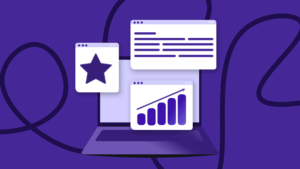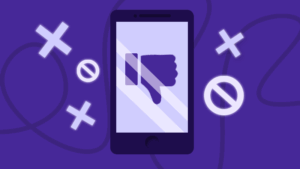How to Scale Facebook Ads
After bouncing around tech start-ups and university literature programs, Joe has finally settled down as Billo’s Head of Content. Joe now spends his days writing ads about ads, teaching clients how to craft killer content, and combing through our web copy with a bold red Sharpie.

If there’s one thing that the 21st Century has brought us, it’s an insight into the never-ending world of technology. From bedazzling digital billboards that adorn even the most run-down of streets to your social media suddenly showing ads for that new perfume, you texted your best friend about, one thing’s clear: there’s no escaping the power of the digital. How to scale Facebook ads is a must question for every digital marketer.
And while techs keep throwing out the latest gimmicks day after day, there’s no doubting that the well-settled giants of the digital marketing world have cemented their footsteps – and they’re here to stay. And you know what? It’s still the almost 20-year-old Facebook that ranks as the number one social media platform. Yes, we swear we’re not pulling your leg. With its 2.5 billion monthly users, Facebook has a massive, massive impact on consumers worldwide – and that’s precisely why you need to know the ins and outs of Facebook advertising if you’re to make a mark in the digital marketing world.
Oh, wait, you’re already on top of your Facebook ads manager and know the Facebook algorithm like the back of your hand? But tell us, do you think you’ve reached your potential? Come one, and I know the answer’s no – you’re capable of so much more. And that’s why it’s time to bring out the big guns and show you how to make the most of your Facebook ad spend and take your business to the next level.
Are you ready for the secret words? They’re simple. They’re short. They’re three: Scale Facebook Ads.
That’s right, scaling your Facebook ad is what will bring you to the pot of gold at the end of the rainbow, and luckily for you, we’re going to tell you all about it.
What Does it mean to Scale a Facebook Ad?
Let’s start easy: what does it even mean to scale a Facebook ad? In simple words, scaling a Facebook Ad means maximizing the potential of your highest running Facebook ad campaigns, all while making sure that your ROI stays positive. You might be thinking, huh, that’s it? But it’s slightly more complicated than you think. Even the biggest and oldest of businesses face hurdles when trying to scale Facebook ads, which is precisely why it’s essential to get yourself acquainted with the tried and tested tricks of the trade. So buckle up, and get your trusty notebooks ready!
How do you Scale on Facebook?
Hmm, that seems like a good question: how do you scale on Facebook? Well, the answer is.. practically never-ending! But, worry not, we’ll tell you all about it, starting now!
Horizontal or Vertical: What’s the way to go?
It’s like asking the age-old question: long stripes or length stripes, which ones look best on me? And really, everyone knows that there’s no one answer to that – it’s all up to personal preference. And your Facebook ads are kind enough to have done the same: they’ve left it all up to you!
Which is why it’s essential to know which is which:
- Horizontal Scaling
With horizontal scaling, there’s only one mantra: expand, expand, and expand. This form of scaling involves acquiring new audiences and trying out new versions of ads and their accessories. And while it’s true that scaling Facebook ads horizontally is no easy feat, its rewards are also unparalleled. Intrigued? Keep reading. We’ll soon make you a pro at scaling Facebook ads horizontally – just let us get to vertical first!
- Vertical Scaling
With vertical scaling, it’s really about opening up the bank and spending more on your Facebook ads until you’ve attained a vast audience. The essence here is the timing because it’s key to ensure that your increased daily ad spend doesn’t go to waste. And while we’re not saying that your ad spends per click or view will not increase, we’re saying that the best and most effective vertical scaling strategies will see only minimal increases.
So really, there’s no one way to success – it’s all about personal goals, the stage that your business is at, the resources you have at hand, and of course, your inclination. That said, whatever you choose to go with, do it well and do it wholeheartedly, and it’s bound to pay off!
Scaling Facebook Ads: The Best of the Best
While it’s clear that it’s high time you start scaling your Facebook ads, we’ll be the first to admit that it be confusing what your first steps should be.
To make things easier, we’ve outlined some of the best scaling tactics, guaranteed to make your Facebook ads stand out against the rest truly!
Starting with the horizontal:
1) Keep your Current Audience Engaged
One of the most significant business tasks is to build customer loyalty, and the only way to do that is to not forget about your existing customers. The same goes for when you’re scaling Facebook ad campaigns or Facebook ads: keeping your current audience engaged is a must.
It’s important to realize that although your target audience was grouped into different categories, not everyone within a variety will respond to the same stimuli. In other words, while one Facebook ad might work great for half of a custom audience, it might do just the opposite for the other half. An excellent way to experiment with changes is by playing around with ad creatives or varying offers on a hot selling item or service.
2) Be on the Search for New Audiences
In business, there’s never a thing such as too many customers. If you’ve got a thing that sells, you can continually expand your customer base with the help of some winning ads.
There are many subgroups within the horizontal scaling strategy of targeting new audiences, such as:
- Lookalike Audiences
A Facebook lookalike audience is a group of users that mimic the qualities or demographic of your current audience. Some of the most common lookalike audiences – and the ones that pay off – are those placed in different (often neighboring) geographic locations, those with similar – but not the same – interests, and or those from a different demographic factor such as age or gender but holding some aligning qualities with your current user base.
A Facebook lookalike audience is a group of users that mimic the qualities or demographic of your current audience. Some of the most common lookalike audiences – and the ones that pay off – are those placed in different (often neighboring) geographic locations, those with similar – but not the same – interests, and or those from a different demographic factor such as age or gender but holding some aligning qualities with your current user base.
- New Regions
Let’s face it – there are only a certain number of customers you’re going to get from a particular area, and once that number has been exhausted, spending more money and effort there might be a waste of resources. While it may be daunting to venture into uncharted territory – especially if the area holds a significant difference in culture, language, or social norms – it can certainly pay off if preceded by thorough research. And as always, don’t be afraid to take risks and explore territories outside of the familiar.
- New Segments
If you’re currently selling your product or service to men, try selling it to women. If you’re advertising is targeted towards users in their teens, maybe expand to the twenties. If your dealing is focused towards a specific socioeconomic class, dip into the adjacent one. Of course, these tactics are not universal, and the nature of the product or service is a genuine – and often unsolvable – constraint, but many a time, these expansions can be made. All you need is some creativity that will churn out Facebook ad campaigns that allow you to increase your audience size and ensure that the same audience becomes a permanent fixture in your database.
Remember, having a vast audience is a great thing, because that means more conversions and more sales – of course, keeping in mind that you have the resources and the expertise needed to maintain both previous customers and prospective customers so that your advertising efforts – and ad spend money – don’t go to waste.
3) Expand your Ad Sets
An ad set, including its composition and how well it’s managed, can either make or break Facebook ad campaigns. And the best performing ad sets are those that are involved in scaling. How do you combine ad sets with scaling? Is that the thought going through your mind right now? We bet it is, and we have the answer!
Look, an ad set typically comprises a warm audience that is receptive to the products or services you’re marketing to them via your multiple ads. And if you’ve managed to find such relevant audiences, then why not advertise more of your merchandise to them? It’s a no-brainer.

And if you’re wondering whether this particular tactic is for you, then the answer is yes! You’ll be surprised at what people buy with the right advertising, and a killer, Facebook ads campaign, is a surefire way to ensure sales.
And the vertical:
1) Pushing up the Ad Spend
With vertical scaling, it’s all about money, and the most obvious choice to do so is to increase the amount allocated to your ad spend for all or some of your ad sets. But there’s a strategy to this as well, and that all depends on your current advertising state:
- If your Facebook ads are only just beginning to show signs of success, then it’s recommended you push up the ad budget every three to five days
- While it may be tempting to make a big increase and significantly up your ad spend, the best amount is anywhere between 10-20% – this ensures that it’s risk assessed and will scale your Facebook to become a contender for your best performing ads
2) Campaign Budget Optimization
Campaign budget optimization, or CBO, is designed to reduce the workload associated with handling your Facebook campaigns’ finances. All CBO asks you to do is ascertain a Facebook ad budget, and it’ll automatically handle allocation between your best-performing ad sets. Not only does this save you time, but it also helps reduce extra costs as you no longer need a financial planner to help determine the best ad set budget distribution.
Worried Facebook won’t get it, right? Well, they’ve been doing it for years, and the results have rolled in, so they know what they’re talking about. And you don’t have to trust us. The results will speak for themselves.
However, it’s essential to know that CBO isn’t for everyone. For CBO to work, you should have multiple ad sets, or at least two – the greater, the better.
3) Reuse, Reuse, and Reuse
The concept of reusing in advertising is different from the typical notion of reusing: it’s more based on reusing previous ideas and replicating them. Businesses, particularly businesses that have been around for a while, have a whole stock of ideas stored in their mental and digital warehouses. This consists of previous ad campaigns and other marketing strategies that have proven to be successful with a business’ target audiences in the past.
The process is quite simple if you’ve kept good tabs on your business – which is something you should be doing anyway. After all, all business data is crucial data.
Here’s what you need to do:
- Select ads that have garnered the most revenue, especially on a cost per ad basis
- Get creative and produce new ad sets
- Incorporate elements from previous winning ads to your new Facebook ad campaigns
- Spread your Facebook ad sets amongst different audiences
You might be thinking that this strategy is reserved for businesses that have spent some time in the market, and while that would certainly make things easier, it’s not always a necessity.
If you simply don’t have enough data to know which Facebook ads are your best, you can experiment on predication and use them in scaling your Facebook ads. The key here is to keep only one variable, so you’re in a position to analyze.
So, you might be asking yourself, “am I always going to be working on how to best scale Facebook ads?” While this isn’t as simple a question as it seems, the answer to it would be no. This is due to the learning phase, a notion applied to and used by all Facebook ads.
The Learning Phase: Ins and Outs
So, what is the learning phase, and why is it important? Good question – you’re a smart one, asking all the things that need to be asked. To sum it up, the learning phase is the duration required by the Facebook algorithm to fully understand how best to optimize a newly launched ad set. So every time you create a new ad set, you enter into a new learning phase. Yes, even Facebook needs time to learn things!
On average, the learning phase takes about 50 optimization events before it knows your ad set’s the complete ins and outs. Once these 50 events have been completed, Facebook will have done all the homework on your ad set by this time. Your ad set will have stabilized.
Oh, and it’s also important not to make any significant changes to your ad set during the learning phase, as doing so may initiate a new phase altogether, disregarding the information that would have been collected up until that point. If there’s one lesson that Facebook knowingly or unknowingly teaches marketers during this time, it is patience. Patience is an essential component in making a business work, and the same foes for your Facebook ad sets.
Review the best Meta ads practices for 2025.
When Should I Start Scaling My Facebook Ads?
So, by this point, you know a good deal about how to scale Facebook ads, but there’s another important question you need to ask yourself before you go any further. Are you at the stage where you need to scale your Facebook ads?
Now, you might think that it’s okay to scale Facebook advertising at all stages of the business, and while that can be true, it’s not always the case. Well then, how are you supposed to know to scale or not to scale? That, after all, is the question.
A typical starting point to start scaling Facebook ads is when they start generating revenue. Think about it, why would you scale an ad that already isn’t bringing you any money? And yes, while such a thing might turn out to be successful in the rare case, it is not a hasty decision to be made, especially not by small businesses that have less to fall back on. In short, underperforming ads are a scaling no-no. After all, your potential customers don’t want to get ad fatigue by re-watching an ad that didn’t shine in the first light.
Similarly, just because a Facebook ad campaign has shown good ad performance does not mean it’s a suitable choice for scaling. The scaling decision has to do with a lot more than just metrics of ad delivery and campaign performance indicated by the Facebook ad manager: it also has to do with finances.
An ad to qualify for scaling needs to bring a positive ROAS or return on ad spend. Only then is it worth the future financial and non-monetary resource investment. So, if you’ve got some ads under your belt that would be sure to dazzle, then it’s time to expand the campaign budget, get the ad creatives out, and give your target audience an ad scaling experience that they truly won’t forget.
There you have it, the complete rundown on how to scale your Facebook ads. We’ve included it all; the easy, the nitty, and the gritty to show you what you’re genuinely getting – now it’s up to you to put it to good use.
Continue learning:
Head of Content
After bouncing around tech start-ups and university literature programs, Joe has finally settled down as Billo’s Head of Content. Joe now spends his days writing ads about ads, teaching clients how to craft killer content, and combing through our web copy with a bold red Sharpie.

Authentic creator videos, powered by real performance data
22,000+ brands use Billo to turn UGC into high-ROAS video ads.
When to Trust Data-Driven Suggestions (and Whe...
Platforms, dashboards, and AI tools now shape nearly every marketing [...]...
Read full articleThe Power of Content Seeding: How to Plant Your ...
Content distribution has shifted — dramatically. Today, 70% of B2B [...]...
Read full article10 Common Digital Marketing Mistakes to Avoid in...
Digital marketing is fast, and what worked years ago might [...]...
Read full article




